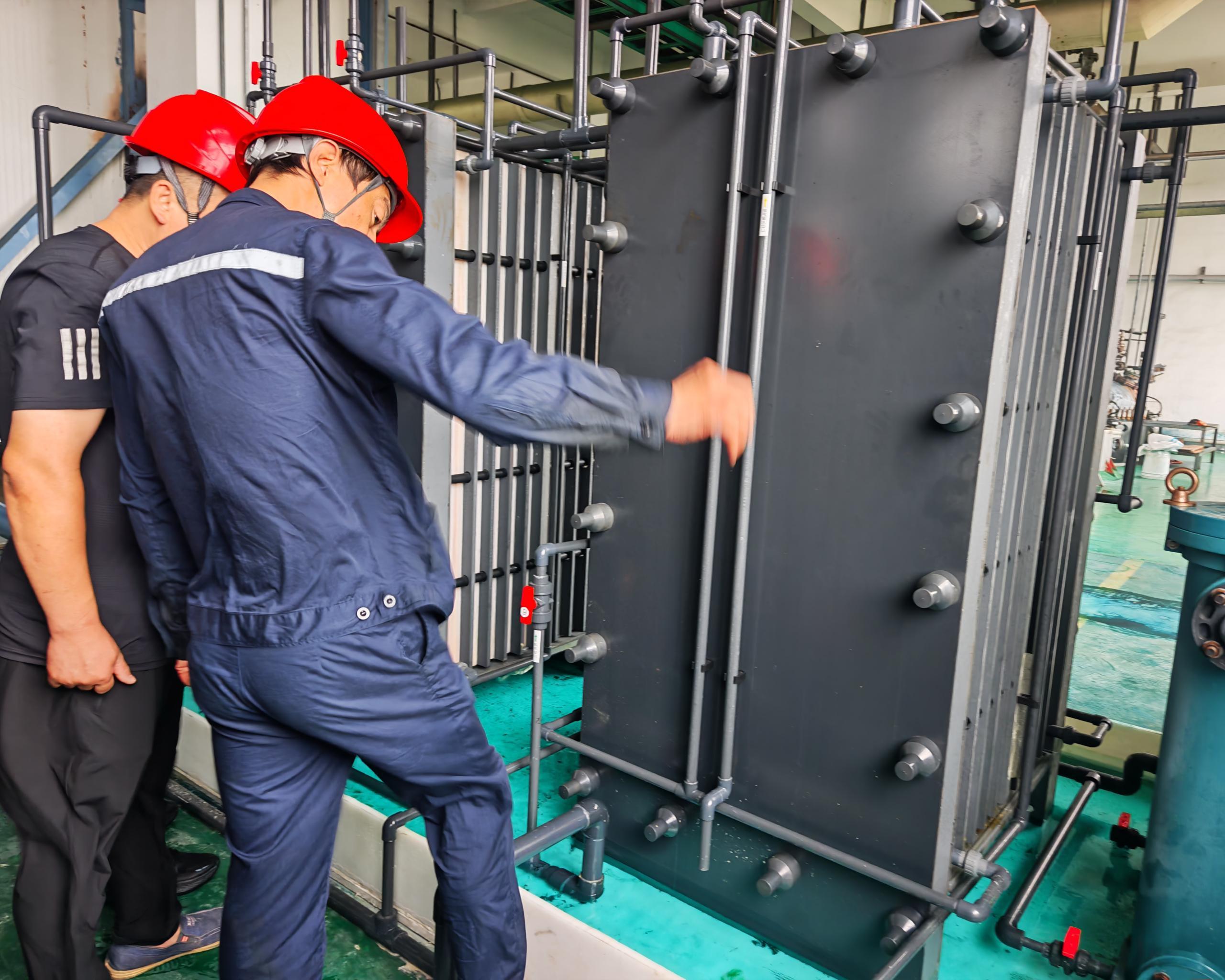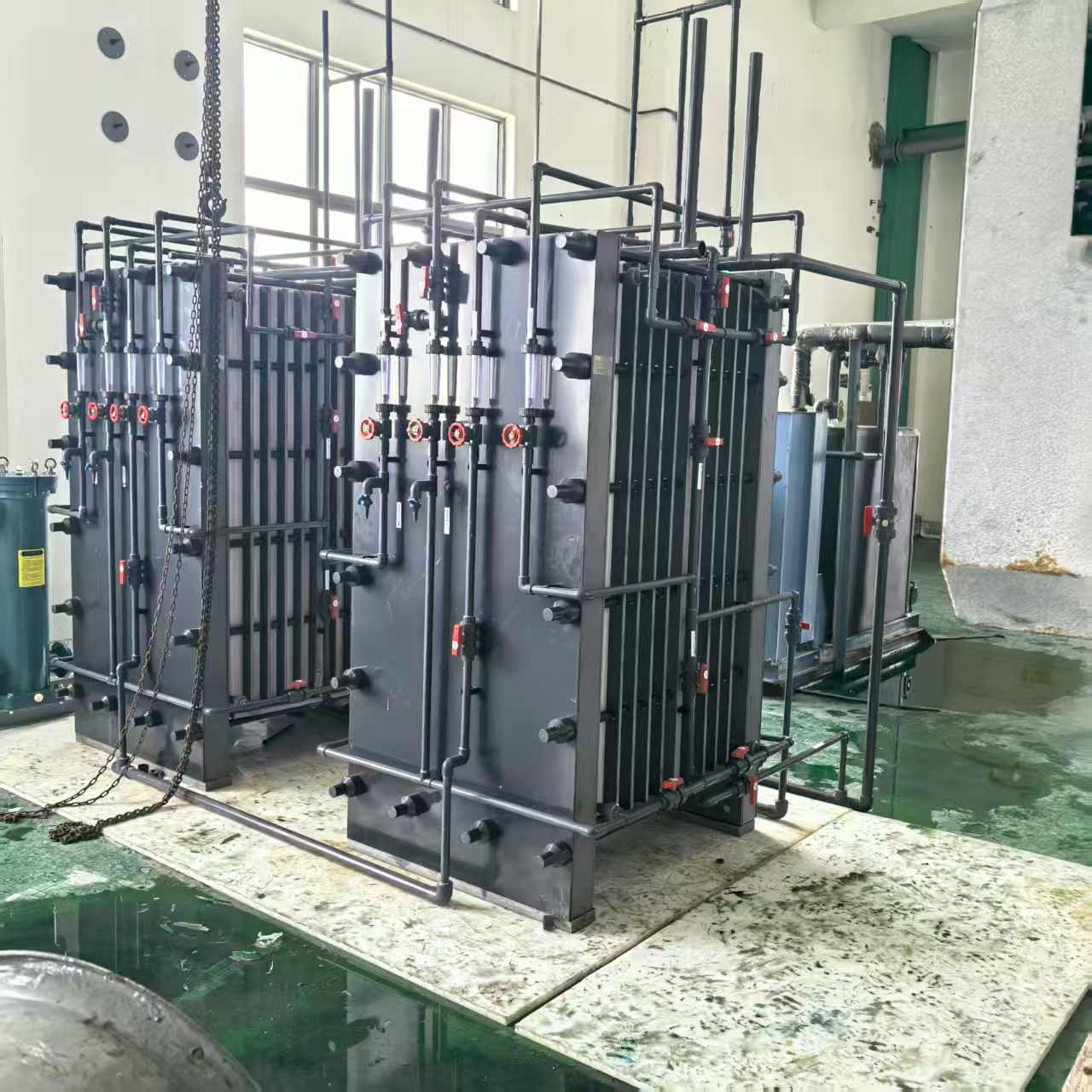09
2025
-
10
A New Path for Recycling Chemical Waste Acid: How Does Membrane Analysis Technology Solve the Problems of environmental protection and cost?
Author:
In chemical production, a large amount of acid-containing waste liquid is generated in processes such as metal surface treatment and organic synthesis. If not properly treated, it will not only pollute the environment but also waste resources. The traditional lime neutralization method is prone to generating secondary waste residue, and the evaporation concentration method has high energy consumption and high cost. However, membrane evolution technology, with its unique advantages, has become an efficient solution for the recovery of chemical acids. Its application value and development potential are worthy of in-depth exploration.
I. Core Principles of Membrane Chromatography Technology
Membrane chromatography technology takes the selective permeability of ion-exchange membranes as its core. In the scenario of chemical acid recovery, since most acids exist in the form of anions, anion exchange membranes (anion membranes) are the most widely used. The surface of the anion membrane carries a positive charge, allowing only anions to pass through: under the natural push of the concentration difference, anions such as sulfate (SO₄²⁻) and chloride ions (Cl⁻) in the waste acid, along with hydrogen ions (H⁺), will penetrate the anion membrane and enter the receiving solution (usually water or low-concentration acid), ultimately forming a reusable acid solution. The metal cations (such as Fe²⁺, Cu²⁺) and large-molecule organic impurities in the waste acid are blocked by the anion membrane and remain in the original liquid chamber, achieving precise separation of acid and impurities.
Ii. Typical Industry Application Cases
(1) Dye production industry
Dye synthesis often requires an acidic reaction environment. The waste acid produced not only contains sulfuric acid but also is mixed with residual impurities of dyes, which not only affects the recovery of acid but also increases the burden of subsequent wastewater treatment. After a large dye enterprise introduced the membrane chromatography device, it pumped the acid-containing waste liquid into the raw liquid chamber. Through the directional separation of the anion membrane, sulfate ions and hydrogen ions penetrate the membrane and enter the receiving chamber, forming dilute sulfuric acid with purity meeting the production standards, which can be directly reused in the dye synthesis process. Dye impurities are retained due to their large molecular weight and can be discharged up to standard after simple treatment. This solution has enabled a sulfuric acid recovery rate of over 85%, increased the purity of dye products by 5% to 8%, and simultaneously reduced the discharge of waste acid by more than 60%, thereby lowering environmental protection costs.


(2) Pesticide production industry
In pesticide production, hydrochloric acid and sulfuric acid are often used as reaction media or catalysts. The waste acid liquid also contains toxic impurities such as pesticide intermediates, making its treatment difficult. In response to this issue, a certain pesticide factory has selected an appropriate anion membrane dialysis system: chloride ions and sulfate ions in the waste acid carry hydrogen ions to penetrate the anion membrane. The recovered acid solution, after fine-tuning the concentration, can be reused in the catalytic stage of pesticide synthesis. Pesticide intermediates and other impurities are retained in the original liquid and are discharged up to standard after centralized harmless treatment. After application, the factory's acid procurement cost was reduced by 30%, and the amount of waste acid treated was decreased by 70%. This not only alleviated the environmental protection pressure but also achieved resource recycling.
Iii. Core Advantages of Membrane Chromatography Technology
(1) Enhance the value of products and resources
Membrane chromatography technology can deeply remove metal ions and organic impurities from waste acid, and the purity of the recovered acid can reach over 90%. Reusing it in production can prevent impurities from affecting product quality - for instance, in the dye industry, high-purity sulfuric acid can make dyes more vivid in color and more stable. In the field of fine chemicals, pure recycled acid can reduce the occurrence of side reactions and increase the qualification rate and added value of the final product. Meanwhile, the recycling of acid reduces the purchase of new acid, alleviates the chemical industry's reliance on acid resources, and meets the production demand of "cost reduction and efficiency improvement".
(2) Dual benefits of environmental protection and economy
From an environmental protection perspective, membrane analysis technology can reduce the discharge of waste acid by over 80%, preventing the corrosion and pollution of soil and water sources by acidic waste liquid. It also avoids the secondary pollution problem of waste residue caused by traditional neutralization methods, helping enterprises meet national environmental protection discharge standards and establish an image of green production. From an economic perspective, the membrane evolution process is solely driven by concentration differences and does not require high-temperature or high-pressure conditions. Its energy consumption is only 1/5 to 1/3 of that of the evaporation concentration method. Moreover, the equipment is easy to operate. Ordinary workers can master it after 1-2 weeks of training. The operation and maintenance cost is low, making it particularly suitable for large-scale application by small and medium-sized enterprises.
Iv. Prospects for Technological Development
With the increasingly strict environmental protection requirements in the chemical industry and the upgrading of resource recycling demands, the development direction of membrane analysis technology has become increasingly clear: in the future, by developing new types of ion-exchange membranes with high selectivity and acid and alkali resistance, the acid recovery rate and the service life of the membranes will be further improved. Optimize the modular design of the membrane chromatography device to better meet the production needs of enterprises of different scales; At the same time, explore the "combined process" of membrane chromatography technology with evaporation concentration, ion exchange and other technologies to achieve more efficient separation and recovery of high-concentration and complex-component waste acid liquid. It can be foreseen that membrane analysis technology will play a more important supporting role in the green transformation of the chemical industry.
Related Products
Bipolar membrane electrodialysis: triethylamine phosphate desalination and resource utilization
2025-10-11
Membrane Technology for Acid Recovery in Aluminum Processing
2025-10-10
A New Path for Recycling Chemical Waste Acid: How Does Membrane Analysis Technology Solve the Problems of environmental protection and cost?
2025-10-09
Sodium sulfate bipolar membrane conversion to acid and alkali: Innovative process leads a new direction for resource utilization
2025-10-01
Huanke Environmental Protection Technology
HOTLINE:
Address:Optoelectronic Industry Accelerator in Weifang Hi-Tech Zone, Shandong Province, China
Contact:Zhang Gong
WhatsApp:+8619953608211
Email:eco.eqpt@gmail.com


Consult

TikTok
Copyright © 2023 Shandong Huanke Environmental Protection Technology Co., Ltd
